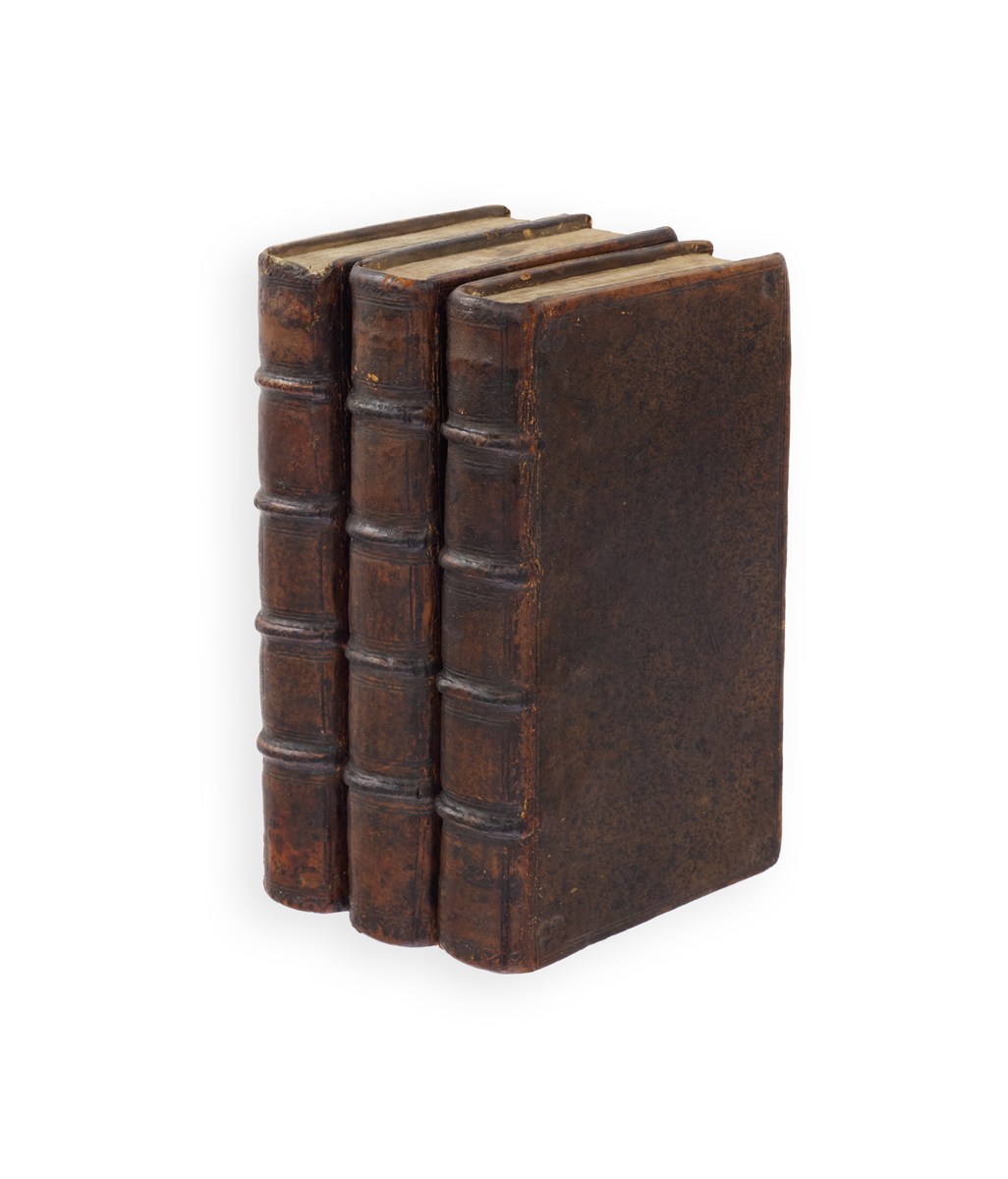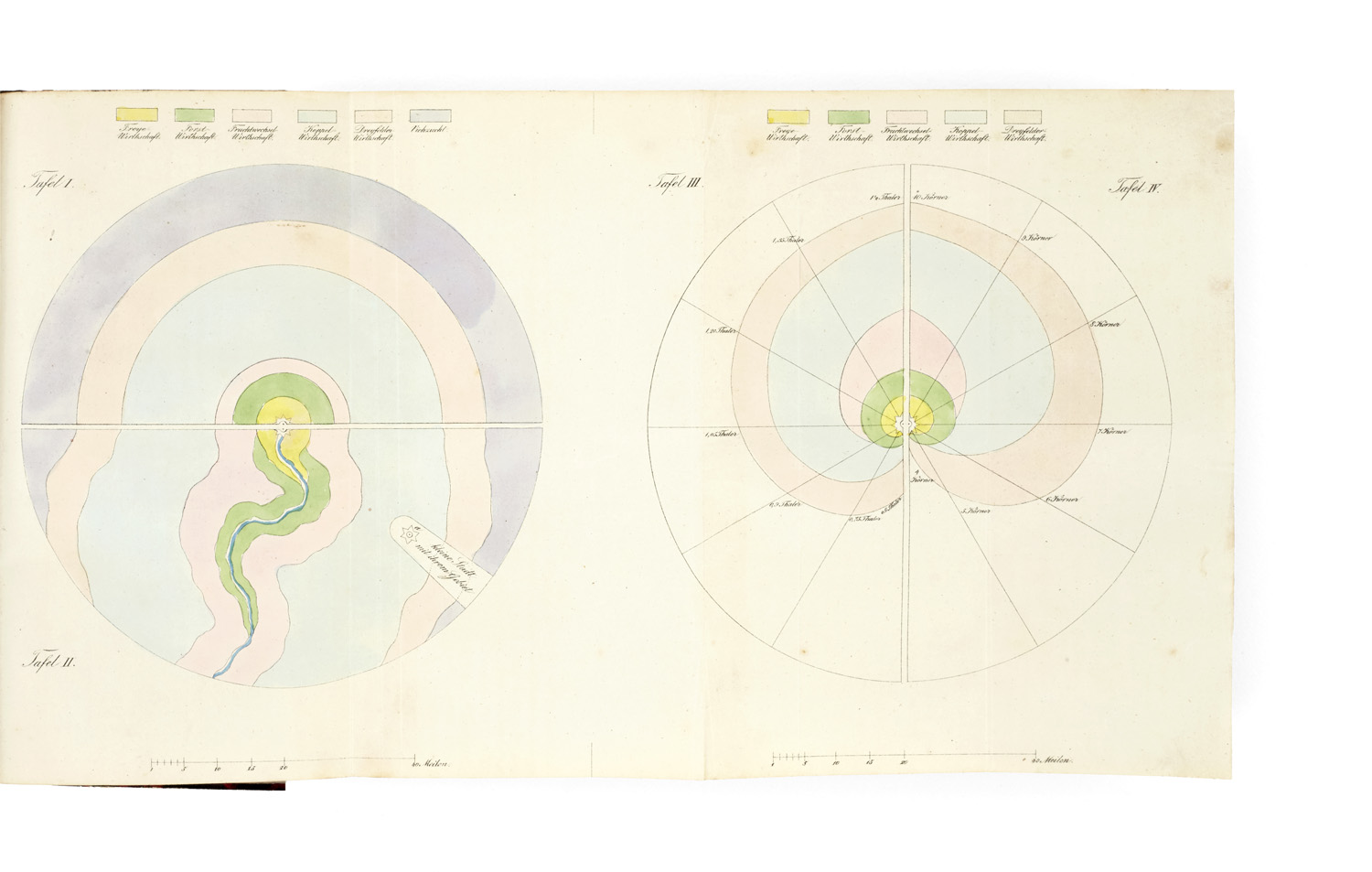PRESENTING CHINA TO ENGLISH READERS
NIEUHOF, Jan; Athanasius KIRCHER; and John OGILBY, translator.
An Embassy from the East-India Company of the United Provinces, to the Grand Tartar Cham emperour of China, delivered by their Excellies Peter de Goyer, and Jacob de Keyzer, at his imperial city of Peking. Wherein the cities, towns, villages, ports, rivers, &c. in their passages from Canton to Peking, are ingeniously described by Mr. John Nieuhoff, steward to the ambassadours … With an appendix of several remarks taken out of Father Athanasius Kircher …
London, John Macock for the author, 1669.
Folio, pp. [4], 184, 205-327, [1 (blank)], 18, [2 (blank)], 106, [2 (blank); with blank Pp2 but without the engraved frontispiece portrait of Ogilby; with additional engraved title, double-page map of China, double-page plan of Canton, 19 engraved plates (‘Palace of Pekin’ appearing twice), and over 100 illustrations within the text; title in red and black, engraved initials, head- and tailpieces; marginal loss and creasing to plate facing p. 26 (old repair), old repairs to verso of plan and to some plates, tears with old repairs to pp. 261-272 and 287 and to Kircher pp. 51-52; browned, some spotting; in contemporary cats-paw calf, gilt panels to covers, spine in compartments with gilt lettering-piece; joints, edges and corners renewed, some rubbing to spine and covers; front free endpaper with ownership inscriptions of ‘J. Davies’, ‘Cammerwell’, ‘Richd Michell’, and ‘von Hemert'.
Added to your basket:
An Embassy from the East-India Company of the United Provinces, to the Grand Tartar Cham emperour of China, delivered by their Excellies Peter de Goyer, and Jacob de Keyzer, at his imperial city of Peking. Wherein the cities, towns, villages, ports, rivers, &c. in their passages from Canton to Peking, are ingeniously described by Mr. John Nieuhoff, steward to the ambassadours … With an appendix of several remarks taken out of Father Athanasius Kircher …
First English edition, beautifully illustrated, recounting the Dutch traveller Jan Nieuhof’s journey as part of Peter de Goyer and Jacob de Keizer’s embassy to Peking between 1655 and 1657. Having previously been employed by the Dutch West India Company in Brazil, Nieuhof joined the Dutch East India Company (or ‘VOC’) in 1650 and was stationed for a number of years in Batavia (Jakarta), where he was eventually appointed steward of the embassy in 1654. The following year Nieuhof served on one of the embassies sent by the VOC to Peking (Beijing) with the intention of convincing the Qing emperor to open up trade relations on the south coast following the VOC’s failed attempt to end the Portuguese monopoly on trade to Macao. Leaving Canton (Guangzhou), the embassy travelled northwards through Jiangxsi, Anhui, Jiangsu, and Hebei provinces, reaching Peking in July 1656 before embarking upon their return trip in October of the same year: in total, the journey stretched over 2400 kilometres, and although the party was unable to discuss trade arrangements with the emperor, they did gain permission to visit the court every eight years.
Nieuhof compiled the notes and sketches from his journey upon a brief visit home in 1658 and a first edition, in Dutch, subsequently appeared in 1665, followed shortly thereafter by translations into French (1665), German (1666), and Latin (1668). This is the first English translation and the work of John Ogilby, a one-time dancer and acting director who later turned his attention to translating and publishing. Throughout the 1670s and 80s Ogilby took interest in and published a number of translations of prominent studies of China such as the work of Olfert Dapper and Gabriel de Magalhães: this, his translation of Nieuhof, was his first work in that area and significantly paraphrases and abridges the Dutch original. The main section of the work, Nieuhof’s narrative, is split into two parts (as also in the Dutch original), the first recounting Nieuhof’s journey and the second containing a general description of China. Newly included for this edition are two appendices, a letter concerning the embassy by the Jesuit father John Adams (whom the title-page describes as ‘their Antagonist’) and perhaps more importantly a translation, also by Ogilby, of parts of Athanasius Kircher’s monumental China illustrata (first published 1667), including passages on the Nestorian monument, the appearance of Christianity in China, and the habits of the Emperor, as well as on Chinese astronomy, idolatry, and politics. The inclusion of this appendix also marks the first appearance of Kircher’s China illustrata into English.
Unlike the Dutch, French, Latin, and German editions, the English translation of Nieuhof was not published by the Dutch engraver Jacob van Meurs but rather by the London-based John Macock. As a result, it does not feature the complete set of 35 double-page engravings which made Nieuhof’s work so influential in shaping future European artistic depictions of China, but it does include (admittedly somewhat inferior) copies of certain individual plates, such as the frontispiece and the ground-plan of the Emperor’s palace in Peking, amongst others. Moreover, it also reproduces a number of the most famous illustrations to adorn Kircher’s China illustrata (which also reused some of Nieuhof’s plates), including the portraits of the young Kangxi Emperor, the German Jesuit missionary-cum-astronomer Adam Schall von Bell, and Matteo Ricci alongside the Chinese convert Paul Ly.
A second English edition of Ogilby’s translation appeared in 1673. According to Catherine Pagani, the work remained, for English readers, ‘the authority on China until the mid-nineteenth century’.
Cordier, Sinica 2347; Löwenstein 140; Lowndes IV, 1692; Lust 535; Wing N 1152.

